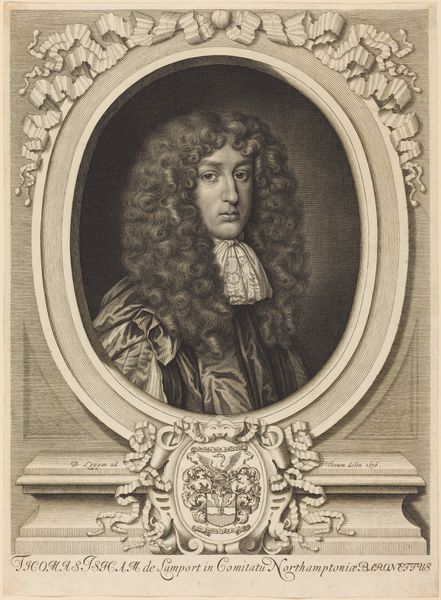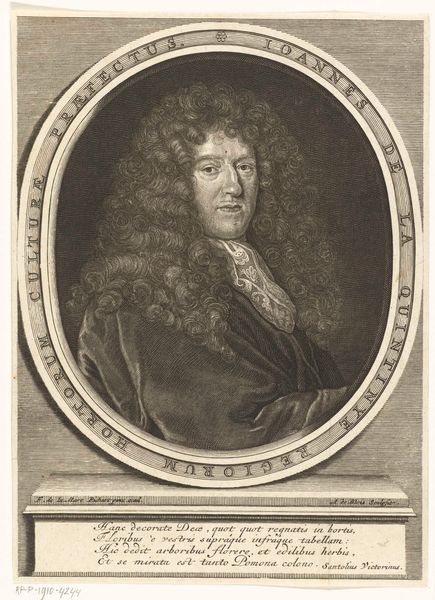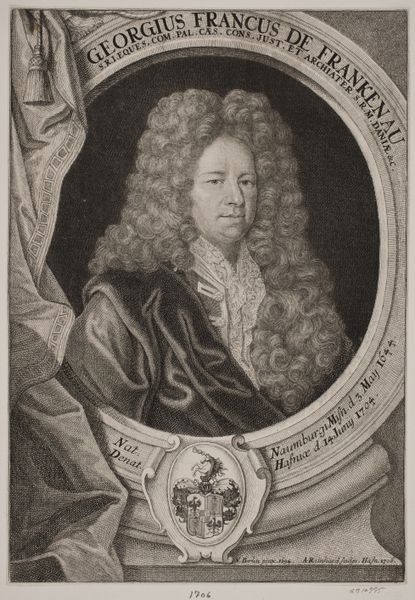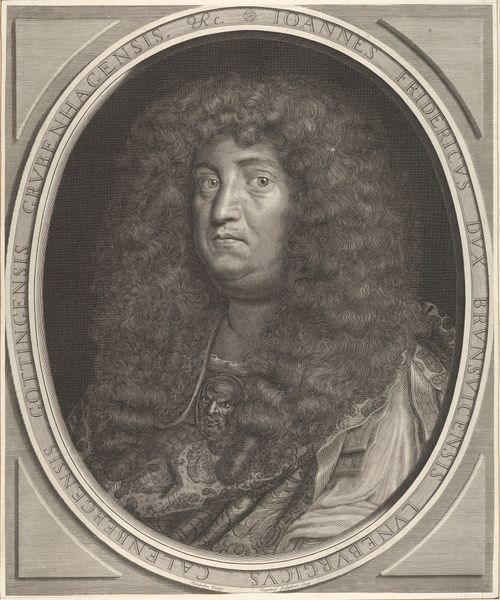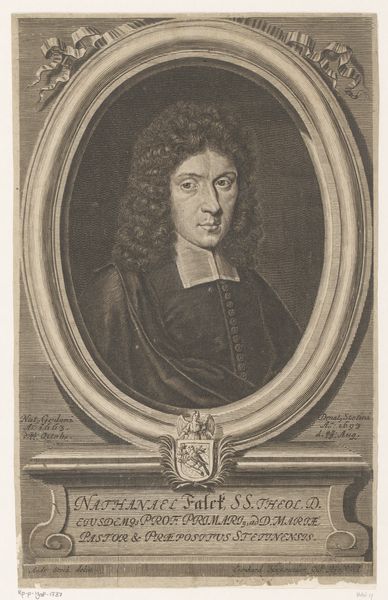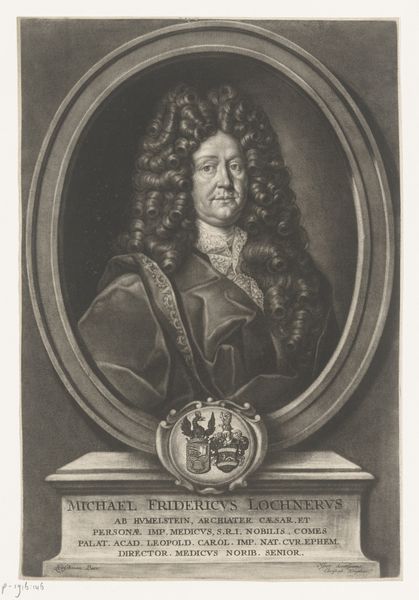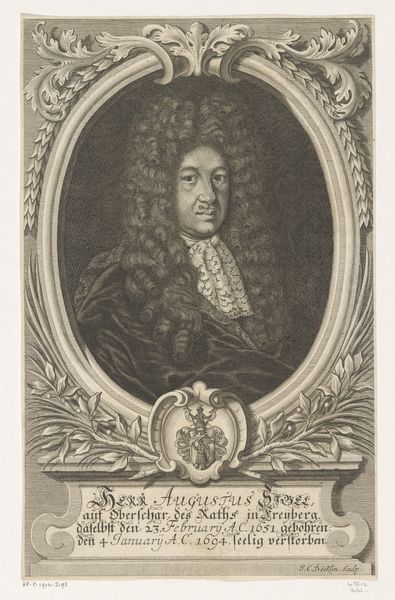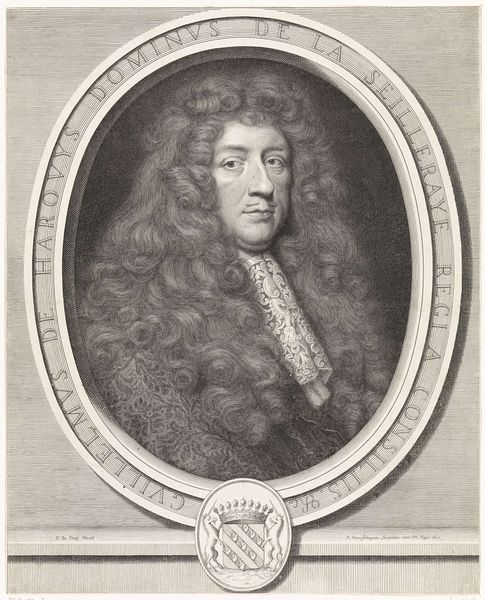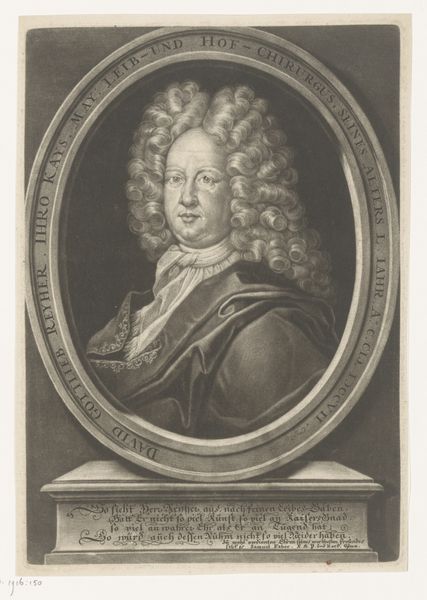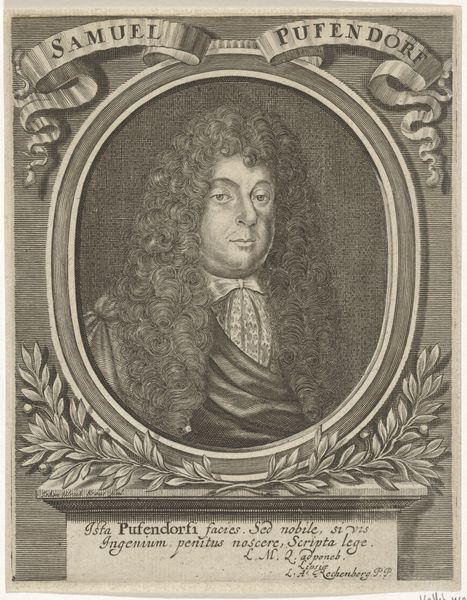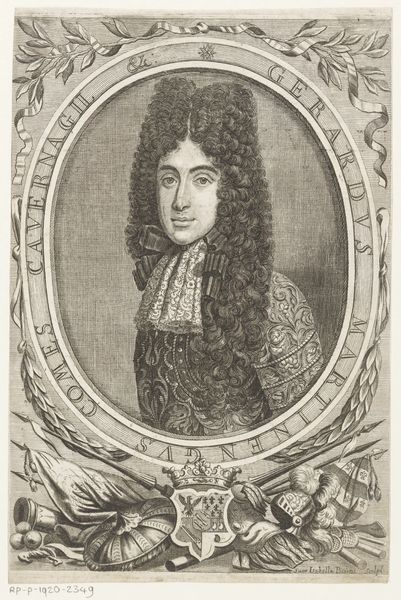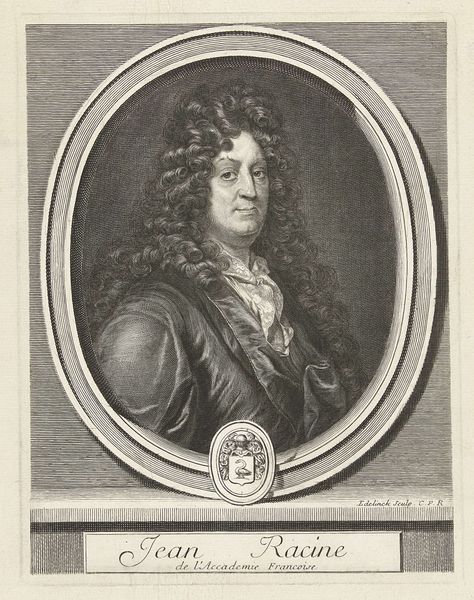
silver, print, engraving
#
portrait
#
silver
#
baroque
# print
#
history-painting
#
engraving
Dimensions: plate: 35.1 x 25.5 cm (13 13/16 x 10 1/16 in.) sheet: 37.6 x 26.6 cm (14 13/16 x 10 1/2 in.)
Copyright: National Gallery of Art: CC0 1.0
Curator: Let's discuss this striking engraving, "Hendrik Casimir II, Count of Nassau-Dietz" by Abraham Blooteling. What's your first take? Editor: Well, the lace is definitely screaming for attention, isn't it? I mean, that ornate collar... It's like a frothy cloud trying to both hide and flaunt the count's…well, let's call it robust physique. Curator: The use of lace there is key to understanding the subject’s position and era. It underscores performative masculinity as constructed by class and social standing during the Baroque period. Notice how it both adorns and almost obscures the armor beneath? Editor: It's that tension that gets me. Is he a warrior or a dandy? Both? Maybe he’s just off to a particularly fancy dress-up battle. Though honestly, I feel a little sorry for the engraver; imagine having to meticulously recreate all that filigree. I’d go cross-eyed! Curator: The choice of engraving in silver, and the portrait style itself, reinforces his role in history, linking him to a visual language of power. Prints like these circulated widely and established, reinforced, or even challenged the reputations of political figures across Europe. What this tells us about ideas of power and visual messaging for his time and those yet to come is fascinating. Editor: That's a good point – this image was deliberately crafted for consumption and speaks to carefully-calibrated PR. But I still circle back to the curls. The almost ludicrous curls… the engraving really commits to rendering those bouncy ringlets with such dedication! I bet he had a whole team devoted just to the upkeep of those tresses. Curator: Considering what was required of nobility in this period in terms of public image, those performative gestures of grooming are far from irrelevant. Editor: Of course, it tells us about identity… Status… Just imagine the sheer amount of hair product. What strikes me most, though, is how we’re still dissecting images of powerful people centuries later. Curator: Indeed. It highlights the continued importance of understanding the intersection between identity, representation, and power in visual culture. Editor: Precisely. It’s fascinating how a historical image rendered in monochrome can ignite such colorful conversations about representation and…well, really good hair.
Comments
No comments
Be the first to comment and join the conversation on the ultimate creative platform.
